Growing up in rural Minnesota, Jon Staff was always drawn to and surrounded by nature. “Between my first couple of jobs and graduate school, I lived in a 26-foot Airstream trailer for five months while traveling West,” he said of his early adulthood. “It was this experience that made me fall in love with the idea of living simply in nature and making frequent disconnection part of my routine.”
For the first time in a long time, he had the space to reflect, realizing how important a work-life and nature-city balance was to his emotional wellbeing, productivity, and happiness. During that very trip, he and his college friend, Pete Davis, brainstormed the concept of Getaway. The idea to create a collection of rentable cabins less than two hours from a city has since boomed, going from the desire to disconnect and recharge to establishing a nationwide expansion.
Announcing nine new outposts to open throughout the remainder of the year, Getaway’s latest developments include small cabins outside of locations like Indianapolis, St. Louis, Cincinnati, and Milwaukee. Also new is the introduction of the Getaway Campground, which allows outdoor enthusiasts to connect with nature with more comfort than the typical self-pitched tent—though the campgrounds will have spaces for those who prefer to bring their own, too—through grounds that have been outfitted with tents and details like premium bed linens and modern bathrooms. To find out more about Getaway’s 1,000-plus cabins and accommodations nationwide, Whitewall spoke with Staff.
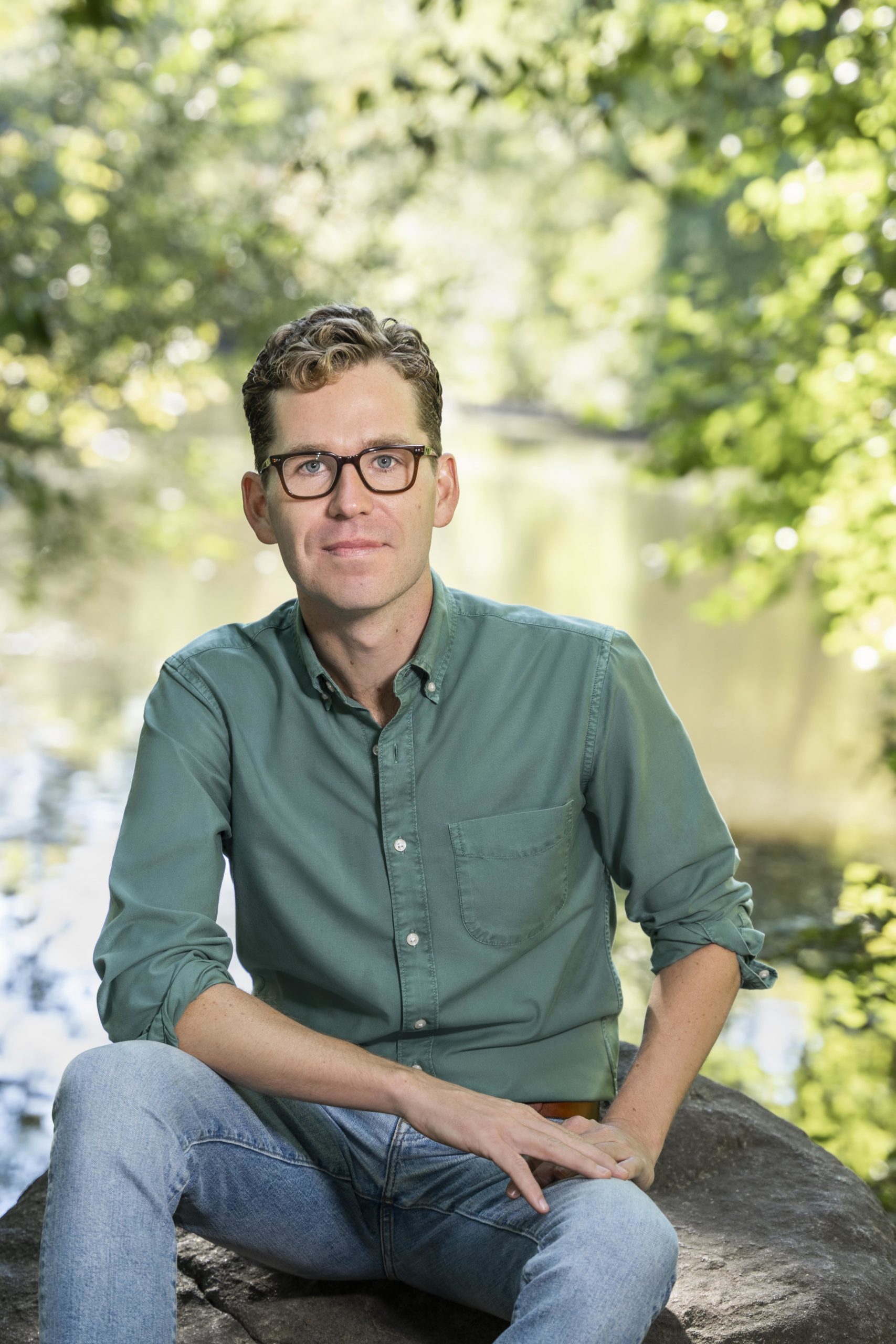
Portrait of Jon Staff courtesy of Getaway House.
WHITEWALL: Can you tell us a bit about your background leading up to founding Getaway House?
JON STAFF: Between my first couple of jobs and graduate school, I lived in a 26-foot Airstream trailer for five months while traveling West. It was this experience that made me fall in love with the idea of living simply in nature and making frequent disconnection part of my routine. For the first time in a long time, I had the space to reflect, and I realized how important this work-life, nature-city balance was to my emotional wellbeing, productivity, and happiness. During that trip, my college friend Pete Davis and I developed the concept of Getaway where we build a collection of cabins less than two hours from a city that people can rent by the night to disconnect and recharge.
WW: What did you feel was missing from the hospitality market that you aimed to fill with the brand?
JS: Our world is overconnected and often feels overwhelming. Work feels like it has become twenty-four-seven; we’re always plugged into our devices and feel the pressure to instantly respond. The city is great, but it can be unrelenting in its stimulation. We’ve always wanted Getaway to provide people with a way to easily get back to nature and reconnect with themselves and their loved ones. What Getaway offers compared to other nature-based destinations is time and space for disconnection and a gentle nudge to put away devices during a stay. The lack of wifi throughout our properties is intentional, and we discourage the use of digital technology and deter our guests from answering emails or checking social media.
WW: How were these special cabins designed?
JS: Our tiny cabins are custom built and are manufactured around the U.S. The cabins range from 140 to 200 square feet and come with everything you need for a simple escape to nature: a comfy queen bed (or queen bunks), linens, a two-burner stove, mini-fridge, sink, toilet, hot shower with shampoo, conditioner, and body wash, heat and AC, an outdoor fire pit with grilling grate and outdoor seating, cookware, silverware, dishware, a mini-library, and a cell phone lockbox to encourage disconnection.
WW: Each cabin features an array of items—like a lockbox for your phone, books, a radio, a campfire—to help guests unplug from the outside world. How much of the Getaway experience do you feel is centered in wellness?
JS: We believe that quiet time spent in nature can be restorative and should be part of one’s wellness routine, like meditation or yoga. For us, Getaway exists to help you prioritize your wellness and well-being. We believe that Getaway is about creating the space for people to find balance in the “always-on” world.
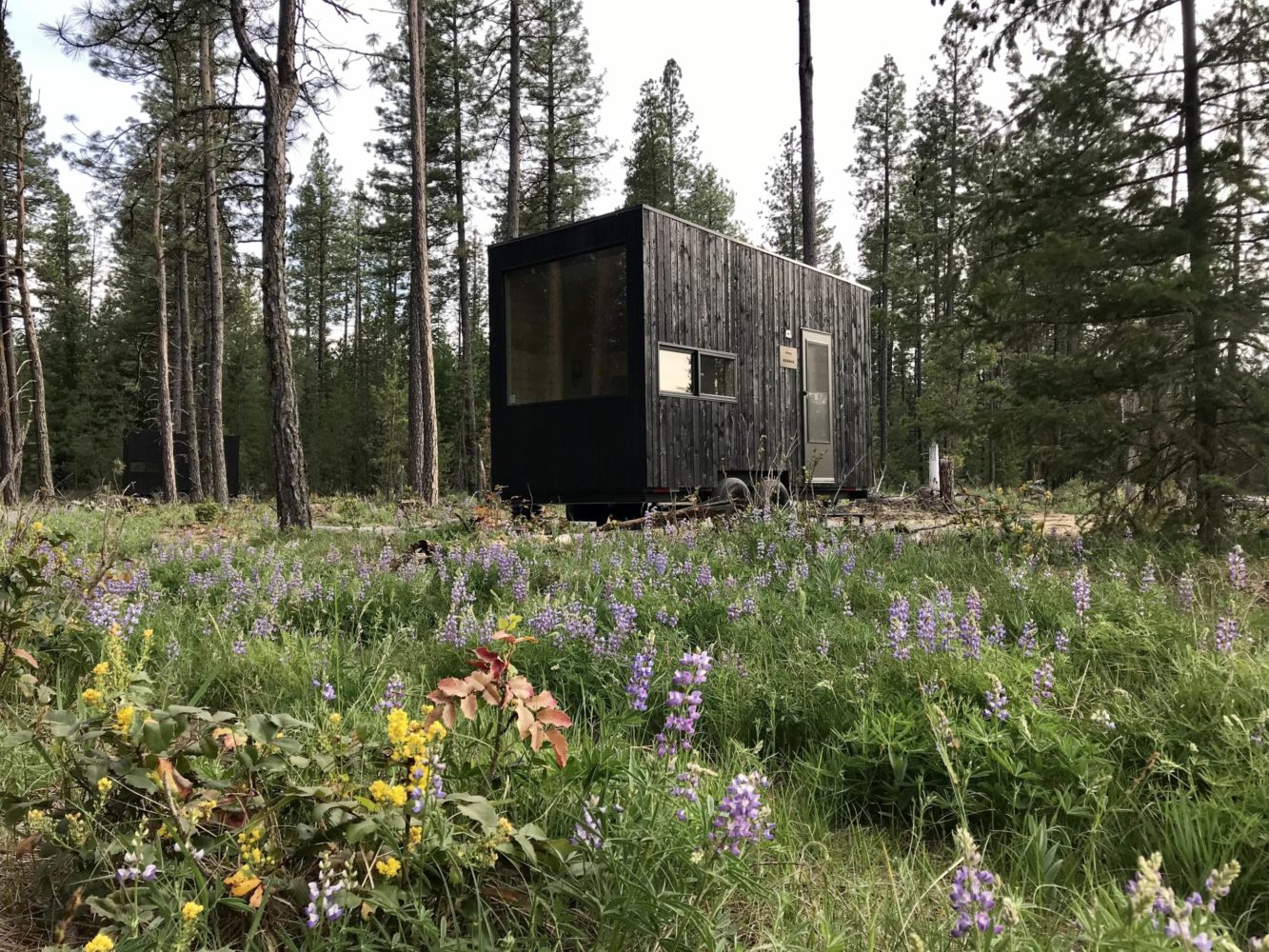
Courtesy of Getaway House.
WW: How do you envision your personal relationship to health and wellness? What part of that is nature?
JS: My relationship to health and wellness is ever-changing. I prioritize both, and I have daily rituals like spending 30 minutes outside every day that are nature-based, but there are often days where I don’t get outside and put my health and wellness on the back burner. Separating from technology and reconnecting to nature creates a balance that not only provides quiet, unstructured time to recharge but allows a person to better focus when engaged with work, technology, and the hustle and bustle of city living.
WW: You published a book entitled Getting Away, featuring 75 everyday practices to find balance. What are some highlights for our readers?
JS: Getting Away is a guide to unplugging and reconnecting with what really matters on a daily basis. It’s divided into sections dedicated to bringing balance to areas of our lives with easy-to-implement practices that focus on areas including yourself, your home and your work. The tips range from self-care, stress reduction and maintaining healthy relationships to technology to organizing and outfitting your living space and maintaining focus and productivity while avoiding burnout.
WW: You mentioned you believe that free time is a right, and Getaway aims to remind its guests of that sentiment. What do you do in your free time, or honor it?
JS: I spend my free time in various ways — variety is the spice of life and so too with free time it is best, in my view, to incorporate it in all sorts of ways. I do small things like taking a bath at the end of most workdays and big things like taking two-week fully disconnected vacations. I try to spend a lot of it in nature, but I also don’t think there is anything wrong with lounging on the couch with a book or a Netflix episode sometimes.
WW: Do you have any morning or nighttime rituals?
JS: I don’t look at any of my devices until I’ve had at least a cup of coffee and usually more time than that. It helps me center myself before the day gets rolling. Each night, I take a bath. Bathing is about doing nothing—it’s a time and place reserved for slowing down, and it creates a boundary for me after work. I’ve always been an advocate for baths, but in the past few years, they’ve helped me sleep more soundly and start the next day feeling refreshed and recharged.
WW: What fills your personal space?
JS: My partner and I live in an apartment in Brooklyn, New York. Now that Getaway is a fully remote company, my home has become my office, and I’ve added certain things to make working from home more comfortable. Perhaps off-brand, but I added a treadmill under my desk so I can walk when I’m on calls and it’s too cold or noisy outside. I’m generally skeptical of multitasking, but this works for me.
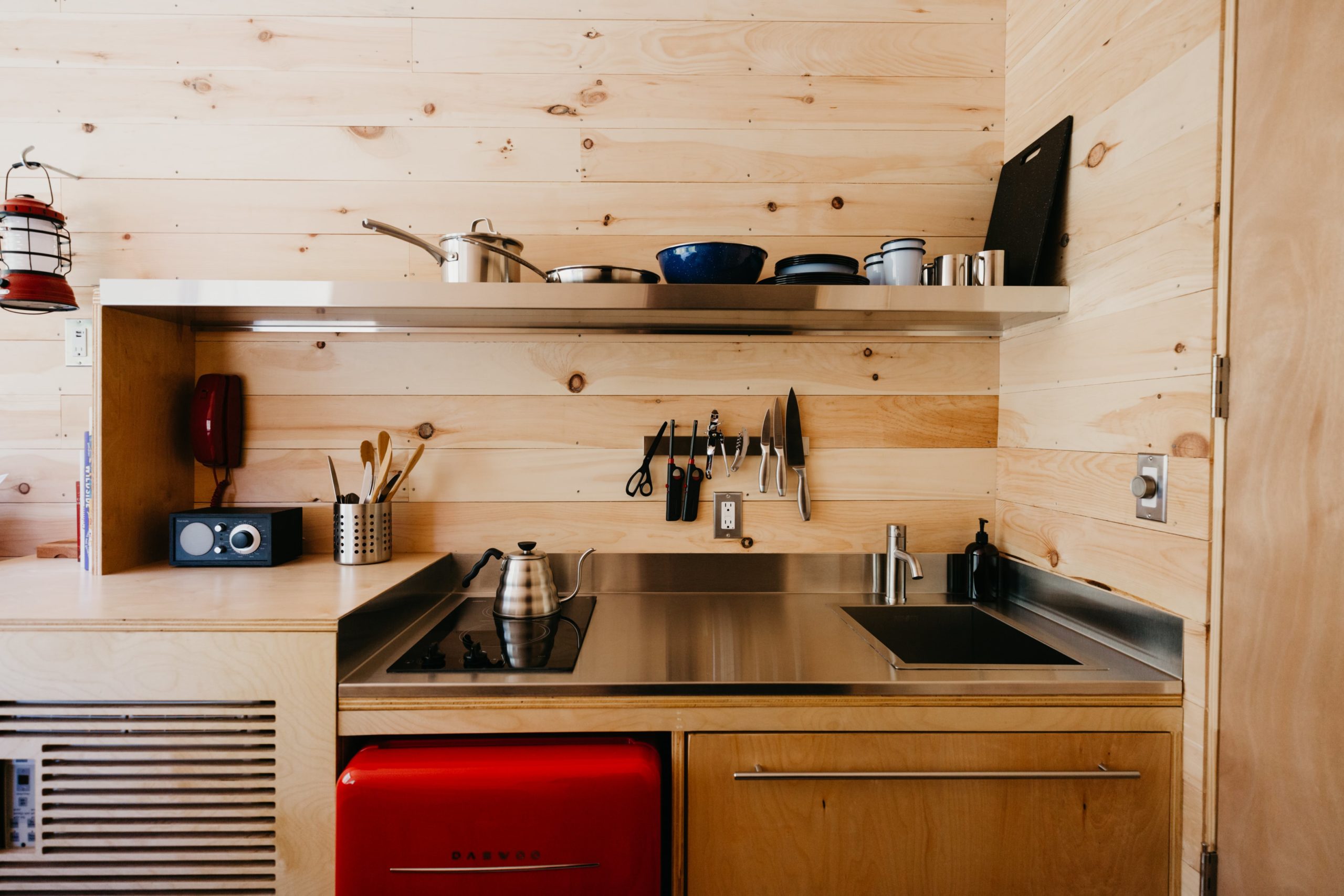
Courtesy of Getaway House.
WW: What are your thoughts on the rise in “nature tourism”?
JS: We’ve heard from guests that they have spent much of the last 18 months inside their homes and connected to their devices, TV and phones – they are cooped up and becoming fatigued with constantly being indoors. We believe resting and recharging in nature will ultimately bring more balance to people’s lives. Spending time outdoors, particularly in green spaces, makes us measurably healthier and happier. Researchers have found that regular exposure to nature offers a range of health benefits—from lower risk of type 2 diabetes and heart disease to better sleep, reduced stress, higher self-esteem and improved memory. We anticipate that domestic, road trip-style travel to destinations in the great outdoors will continue to attract travelers seeking fresh air and greenery who may also want to bring their dogs along for the adventure. We also think that people will continue to crave experiences in which disconnection and unplugging are encouraged in order to have meaningful time with friends and loved ones.
WW: In 2020, Getaway saw a 150 percent increase in bookings year-over-year and nearly 100 percent occupancy on its existing portfolio. In 2021, even as air travel returned, Getaway saw additional growth and expanded its footprint in the U.S. with outposts near Chicago, Nashville, and Seattle. What has it been like to operate a business rooted in hospitality amid the pandemic?
JS: The COVID-19 pandemic has had an unprecedented impact on the entire travel and hospitality industry and the way that we operate. We have been fortunate that guests are choosing Getaway as a safe place to travel during these difficult times given that we are socially distant by design. In the early days of the pandemic, we were worried that people wouldn’t want to escape to a tiny cabin. We quickly learned between Zoom calls and being glued to the TV and our phones every day that people mostly needed a break from the city and feeling trapped indoors, and that there was a greater focus and appeal around being outdoors.
WW: That year, the brand also closed on a round of funding totaled at 41.7 million dollars. What types of conversations do you have with investors that are curious about the rise in mental health as it relates to hospitality?
JS: We’re lucky to have investors who believe in our mission, know there is a strong desire by people to spend more time in nature, and that Getaway offers an appealing outdoor experience to the urban consumer. Yes, they need to work less and disconnect more, but I am working with them on that.
WW: Can you tell us a bit about creating a company-wide Labor Week, and the flex “Getaday,” last year to combat burnout?
JS: I came up with the idea for Getaway in response to my own work stress and burnout. Over the past few years, our teams have worked around-the-clock to ensure guests can disconnect and unplug in our tiny cabins. To prioritize and protect the free time of employees and help them avoid burnout, we closed the week of Labor Day, one of the busiest travel weeks of the year, to give all our employees, including corporate and hourly operations staff, a paid week off for collective rest. Employee burnout as a result of the lack of work-life balance in our country is a problem that runs deep, and it requires more than a one-time fix. Labor Week was not only a way to thank our teams who have been working tirelessly to keep all sides of the business running smoothly, but also a way to cement our commitment to being part of a cultural shift to better work-life balance where free time is encouraged and celebrated.
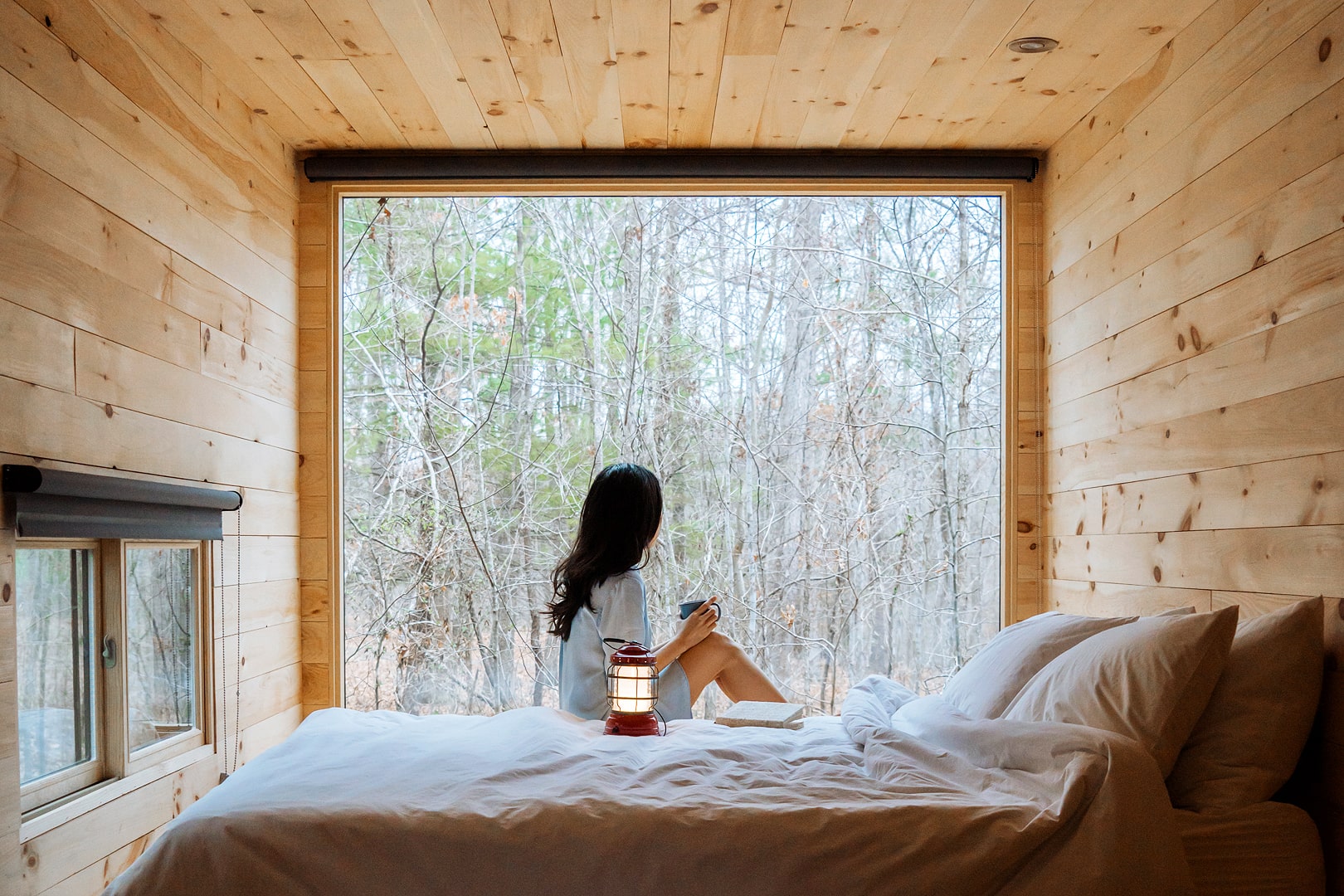
Courtesy of Getaway House.
WW: How did time in isolation emphasize your view of environments—and/or the importance of your brand?
JS: I, and the rest of the Getaway team, realized the ease and convenience of working remotely. This past year, we decided to move to a permanent remote work model for our HQ team. We believe the permanent remote model will offer as much flexibility as possible to support our employees’ home lives, while balancing business needs, and we’re encouraging employees to work in a place that inspires them and makes them happy.
WW: Getaway is expanding to include 5 new locations, filled with 224 new cabins, this year. Can you tell us a bit about this and why you chose these cities?
JS: We select locations based on feedback from our community and followers. Our outposts are situated on large plots of land with plenty of space for cabins that are surrounded by nature with nearby hiking trails. They are located within a short drive, ideally less than three hours, from major cities so that people can go for short escapes to disconnect from work, wifi and routines. We want to ensure guests who are visiting any Getaway Outpost can spend time entirely on their own or with their partners, families, or dogs.
WW: How are you getting away today?
JS: Tonight, I’m getting away an age-old way: I’m going out for a couple of beers with my upstairs neighbors.
WW: What’s next for Getaway?
JS: The team and I are always keeping our eyes and ears open for expansion opportunities outside of cities across the U.S. Our goal is to share Getaway’s mission to make space in the world for free time with as many people as possible.
Outside of work, I am trying to be better and zooming out and separating the wheat from the chaff of life. I can get stuck in my ways and in small details, and I am working on that because while sometimes it is a superpower, often it expends more energy than is worthwhile.
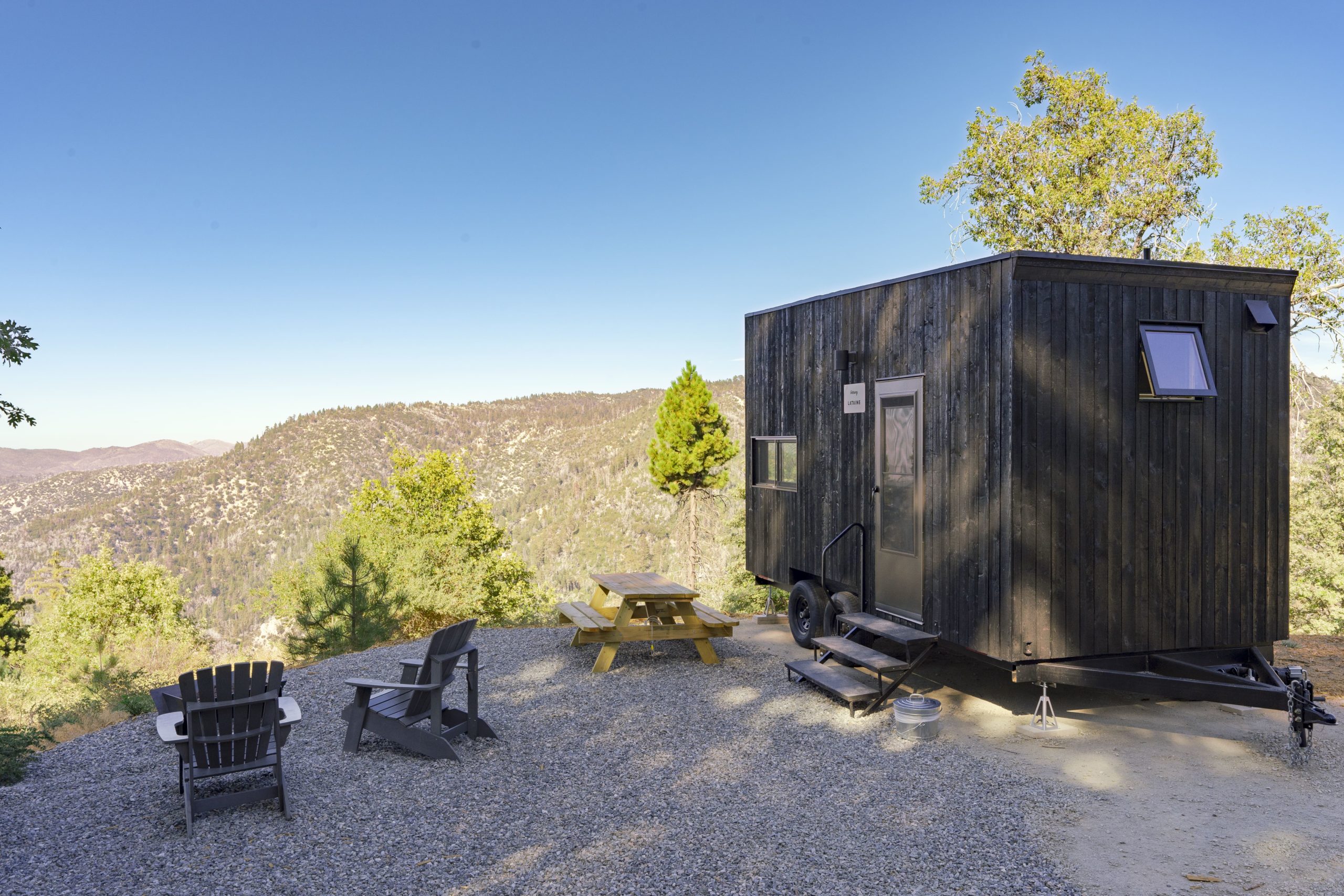
Courtesy of Getaway House.





